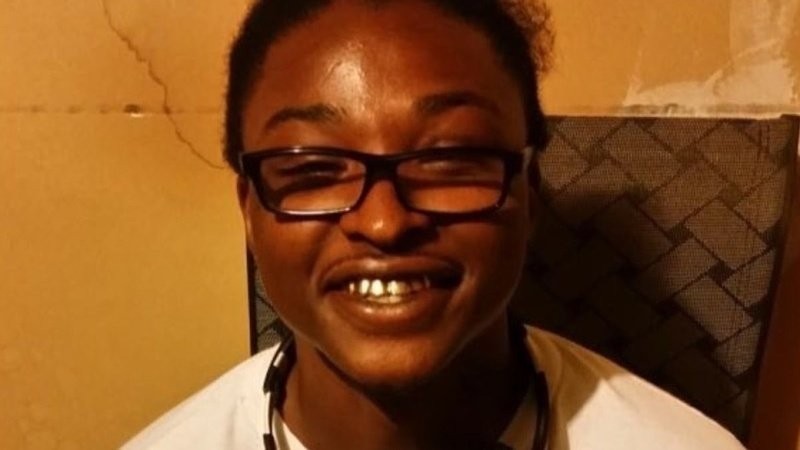
SIU lays no charges in police shooting of D’Andre Campbell but criticizes officers’ behaviour
April 6, 2020, 5:34 p.m.
Two Peel Regional Police officers arrive at D’Andre Campbell’s home. Campbell’s mother opens the door and they enter. Campbell had called 911; his parents and siblings have no idea why. On the 911 call, Campbell told the operator his parents were trying to start a fight with him. Down a short hallway, he is now standing in the kitchen with a large kitchen knife in his right hand.
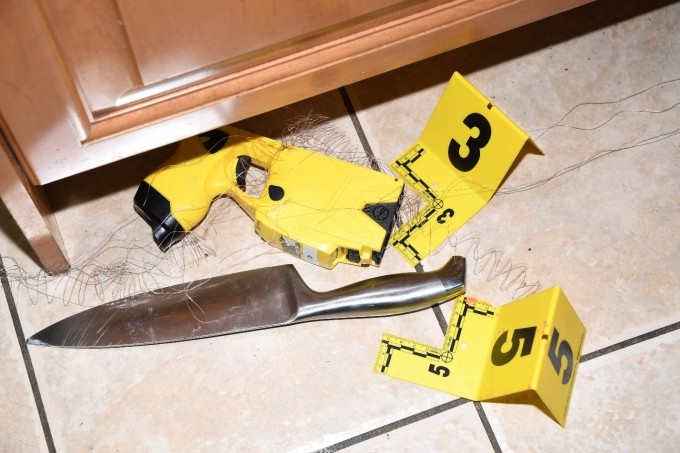
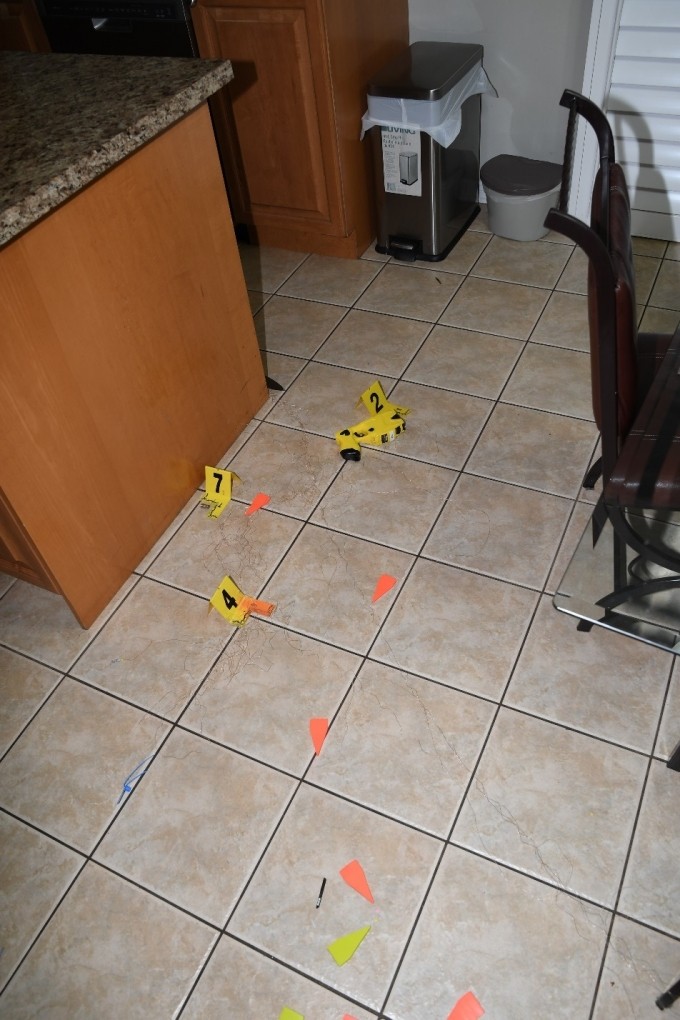
Photos from the scene included in the SIU report.
The two officers engage the man who is battling mental health issues. Campbell had been diagnosed with schizophrenia and bipolar disorder. Dispatchers passed this on to the constables on their way to the home, which Peel police had attended several times in recent years, including just over a year prior when Campbell had stopped taking his medication and became aggressive with family members.
The interaction happens quickly. Tasers are pulled. Orders are given repeatedly to drop the knife. The man refuses. Campbell walks toward the officers. The silver blade glints in the light. One officer pulls the trigger of his taser. It shoots two darts attached by insulated copper wire. The metal barbs at the tip cut through Campbell’s t-shirt and puncture his skin. The electric pulse channelled into his body knocks the man back into the fridge and down to the tile floor.
One officer moves to restrain Campbell. He does not let go of the knife. The pair begin to wrestle. The second officer discharges her taser. It fails to stop the man. The Special Investigations Unit later finds one of the barbs may have struck her partner.
It’s now 5:37 p.m.
The two men untangle themselves from each other and the thin strands of copper wire. They stand up. They face each other from opposite sides of the kitchen island. Campbell is still gripping the knife. Both tasers have been discharged. Both officers pull their firearm.
Seconds later a trigger is pulled. Campbell is shot twice in the chest.
The officers immediately rush to his aid. They try to stem the bleeding with paper towels and call for help on their radios. Campbell’s pulse begins to fade. Paramedics race to the scene. The pulse disappears. The officer who fired both shots starts CPR. Medical professionals arrive, but their efforts can not revive the man. Campbell is pronounced dead at 6:01 p.m.
Twenty-seven minutes. One life is lost and many others irrevocably damaged.
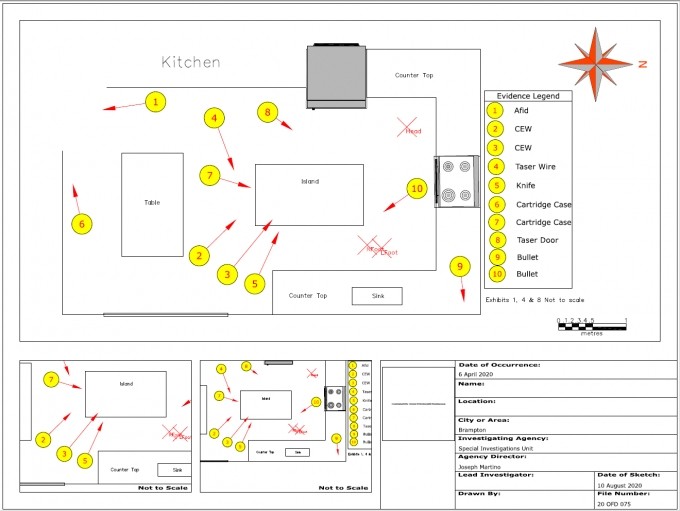
An SIU breakdown of the scene in the Campbell kitchen.
The events described above, as detailed in the SIU director’s report into Campbell’s death, offer the clearest picture yet of what happened eight month ago. The SIU director decided that despite the existence of “legitimate criticism” of the officers’ actions that day, there was nothing to suggest criminal behaviour by the officer who pulled his trigger.
“There is nothing in the circumstantial evidence that would cause me to believe the SO (subject officer) was without genuine belief that he was acting to protect himself,” wrote SIU Director Joseph Martino.
The Director did point out that “systemic issues” may exist in how police respond to mental health calls, but the “narrow” mandate of the SIU is only to determine if a criminal offence occurred, and not to “delve into the broader public policy considerations.”
Martino wrote: “This does not mean that questions of mental health that are raised in the specific circumstances of an incident are not relevant in a criminal investigation, of course, they may well be. It does mean that care must be taken to ensure that the inquiry remains focused on the conduct of the individuals, not the merits or failings of the system within which they operate.”
The SIU investigation found that even though the officers knew Campbell’s struggles with mental illness, and that he had been arrested in 2019 for trying to fight family members after he stopped taking his medication, the two responding officers did not discuss how they would handle the situation if it turned violent.
When officers entered the kitchen and found Campbell with a knife they immediately pulled their weapons, which only serves to further agitate a person in mental health crisis, and in this case, instead of deescalating, circumstances went the other way, “quickly turning into an armed standoff,” Martino wrote.
“At no point was there any effort made to verbally calm Mr. Campbell.”
He said it’s “arguable” that when the officers first entered the kitchen and found Campbell with the knife, they should have turned around. There was no reason to believe Campbell had been violent toward family members that evening — though his past indicates that this had been an issue before — but that evening specifically, the lack of any immediate risk suggests there is “some basis to conclude that the balance of risks favoured disengagement.”
However, Martino concluded that when confronted by someone holding a deadly weapon, the decision to stand your ground and arm yourself is not “unreasonable”.
A key issue addressed by the SIU is the very brief period of time — “seconds” as it is described in the report — between the officers pulling their firearms and Campbell being shot. This timeframe was described differently by those present.
According to the SIU, the witnessing officer said in her interview that Campbell took “one or two deliberate steps forward” before he was shot. This differs dramatically from the accounts given by two of Campbell’s sisters who say they witnessed the shooting. Both stated their brother was standing still when he was shot.
The subject officer declined to be interviewed by the SIU and did not provide his police notes of the event that day, as is his right under existing legislation.
Martino noted he was unable to resolve this contradiction. While he found some evidence to suggest one of the sisters who said she saw the shooting, actually was not in the kitchen at the time, he found no reason to doubt the account given by the other sister. The same is said for the account of the officer. Martino stated he found no evidence to doubt her account, but admitted, “I accept that there is some evidence to reasonably conclude that Mr. Campbell had not in fact advanced upon the SO when he was shot.”
Despite the contradiction, Martino concluded that in the “fraught atmosphere” it is “entirely plausible” the subject officer would believe he was in danger of being attacked with a knife by Campbell.
“The weight of the evidence, for example, establishes that Mr. Campbell was at the very least swaying on his feet when he was shot. It may be that Mr. Campbell was doing so not with any malevolent intention but simply because he had just been ‘tasered’ and was therefore naturally unsteady on his feet. However, the suggestion does not detract from the distinct possibility that Mr. Campbell’s gestures led the SO to reasonably believe that he was on the verge of being attacked,” Martino wrote.
Peel Regional Police Chief Nishan Duraiappah, in a released statement, noted that “no further action will be taken” in relation to Campbell’s death following the SIU’s decision.
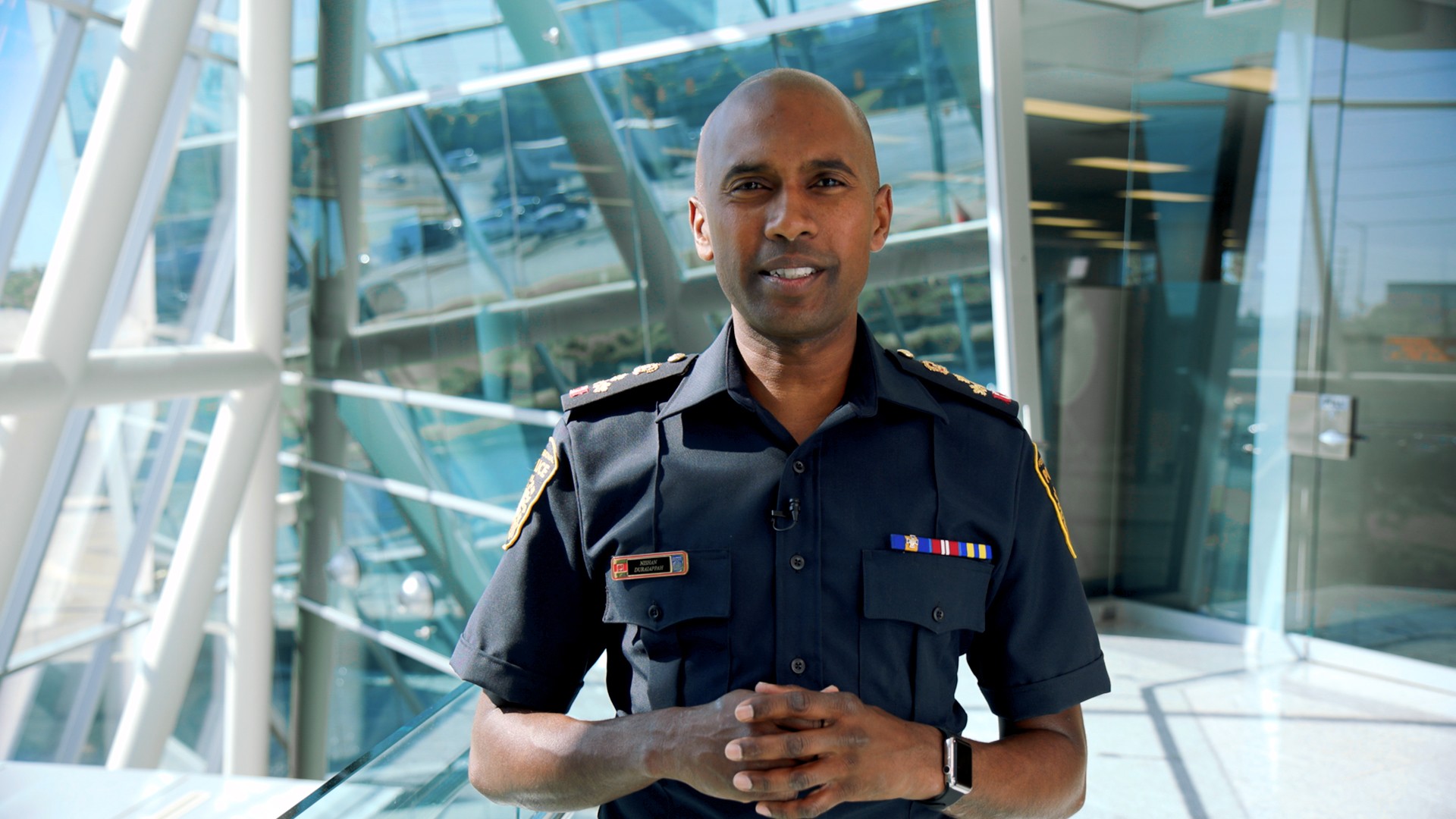
Chief Nishan Duraiappah
“We understand the feelings of loss, grief and pain in our community because of this tragedy,” Duraiappah stated. “No one wanted this terrible outcome for Mr. Campbell. Our officers deal every day with people in crisis, people suffering from mental illness, and the overwhelming majority of cases are resolved safely and peacefully. This was a rare and tragic situation.”
In a statement released to The Canadian Press after the SIU’s report was made public, Campbell’s family said, “D’Andre deserved better.” The family is also contemplating civil legal action, but the details of any future lawsuit remain unclear.
“I am not able to provide more detail about my clients’ views concerning the SIU report,” stated Jeremy Solomon, the family’s lawyer. “A civil action is being contemplated, but again I am not at liberty to say anything further.”
The SIU’s report comes at the end of a year that has seen continued calls for police reform, and for police forces across the globe to reconsider how and where they spend their budgets. In Peel, the issue has been front of mind for many because, despite Chief Duraiappah’s assertion that the tragic results of Campbell’s case being “rare”, and statistically this may be true, the perception among the Peel population is that even one avoidable death is far too many, and the region has seen more than one police shooting in 2020.
In January, 28-year-old Jamal Francique was shot dead by police in Mississauga. Undercover officers were investigating potential drug activity when they approached Francique’s vehicle. Police say this is when he drove his car toward them. Shots were fired through the windshield of the car, killing him. In May, Mississauga resident Chantelle Krupka was shot in the back by Peel police outside her home. She survived, and is now suing the PRP. The officer involved in that shooting was charged and quit the force. In June, police responded to a wellness check at an apartment building in Mississauga, when 62-year-old Ejaz Choudry, who was experiencing a mental health crisis at the time, was shot dead by Peel police tactical unit officers. The SIU investigations into the shootings of Francique and Choudry are ongoing.
It isn’t happening just in Peel. According to data compiled by The Innocence Project and Osgoode Hall Law School, 65 individuals in mental health crisis were killed by police in Ontario between 1978 and 2015. That number has grown in the five years since. And these interactions are becoming much more common. According to Peel Regional Police data, the number of people apprehended under the Mental Health Act by Peel police has increased 50 percent over the last six years, from about 4,000 in 2014 to approximately 6,000 in 2019.
The rapid rise of such incidents, and statistics that show a higher probability of poor outcomes from these encounters, illustrates the need for reform and police oversight to address issues arising from the way mental health crises are handled.
In his statement following the SIU report, Chief Duraiappah pointed to PRP’s Mobile Crisis Rapid Response Teams (MCRRT) and the Crisis Outreach Assessment Support Teams (COAST) as being key players in helping to ensure these interactions do not end in tragedy. The Chief also said further training will remain a priority.
“Our mission every day is to equitably serve and protect all 1.4-million Peel residents,” he said. “While the SIU investigation found that under extraordinary circumstances our officers acted lawfully, in accordance with their training and responsibilities, we will continue to develop training and programs, and partner with mental health experts to ensure that individuals receive the right services, at the right time.”
While programs like MCRRT and COAST will certainly help alleviate the burden on local hospitals, and help those in crisis get the help they need, Peel currently does not have enough MCRRT resources to meet the growing demand. During a meeting of the Peel Police Services Board recently, Chief Duraiappah noted while further resources are being added to the MCRRT program which will fund an additional team on the road 12 hours per day, it’s a fraction of what is needed. Current resources, he said, need to be tripled to meet the demand.
The numbers are staggering: Peel Police tallies 16 mental health apprehensions per day, along with 21 family disputes, and 30 calls for reports of intimate partner violence. At peak times, Peel Police officers are responding to about 200 calls an hour.
With three MCRRT teams on the road, they are only able to attend about one third of the calls for service. By comparison, other similar sized police forces have between 50 and 60 MCRRT teams.
“We’re still responding to the dominant number of mental health crisis calls with a uniformed presence,” the Chief said, suggesting the problem of having officers deal with these issues without trained mental health professionals accompanying them.
Further compounding the issue, the criteria to allow for an MCRRT team to respond is quite narrow: the call must involve someone over the age of 16, it must not be of an “emergent nature”, there can not be weapons involved, and the situation must be calm.
Therefore, in Campbell’s case, the SIU concluded that the decision not to send an MCRRT team was a “prudent” one.
To prevent further tragedies, this places an increased need on police organizations to ensure their officers are properly trained to handle those in crisis, as they continue to see an increasing number of these calls.
Email: [email protected]
Twitter: @JoeljWittnebel
COVID-19 is impacting all Canadians. At a time when vital public information is needed by everyone, The Pointer has taken down our paywall on all stories relating to the pandemic and those of public interest to ensure every resident of Brampton and Mississauga has access to the facts. For those who are able, we encourage you to consider a subscription. This will help us report on important public interest issues the community needs to know about now more than ever. You can register for a 30-day free trial HERE. Thereafter, The Pointer will charge $10 a month and you can cancel any time right on the website. Thank you.
Submit a correction about this story


